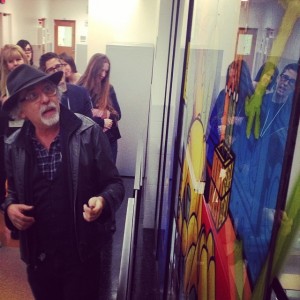
Even a legend has to deal with frustrating bureaucratic labyrinths to push his vision over a thousand hurdles of ego, red tape and protocol. But designing a stained glass window “was on my bucket list,” Art Spiegelman told the crowd gathered for the unveiling earlier this month, so he waded into the red tape, hassles, and economic ups and downs of a large New York construction project and did it anyway, with wit, wisdom and good humor. And it turned out very well for everybody.
Spiegelman, best knows for his graphic novel Maus and his alt-comix magazine Raw, got his chance to tick another box on his list when New York’s High School of Art and Design in Manhattan (his alma mater; class of ’65) asked him to submit a plan to add his touch to their new building. His window proposal was accepted by a five-person panel with a three to two vote, but as budgets shrank, designs shifted and bureaucrats argued, Spiegelman had to adapt. A tall order for a guy who, as an established alternative cartoonist and the husband of the New Yorker’s cover art editor (of which he’s created several), is pretty used to having his way, creatively. I mean, if he envisions it, Art Spiegelman can pretty much do it, no strings, no red tape, no noes.
His vision for a huge, multi-panel “comic strip” style exterior window became a smaller interior window, overlooking the cafeteria—the “heart of the school,” according to Spiegelman. Calling the piece “It Was Today, Only Yesterday,” the window’s main three panels depict an artist in three stages of life: as a child (scribbling on a book in his room), as a student (working at a drawing table) and in adulthood (a vision of the mature artist of the future). Other Mondrianic panels depict cartoons of Spiegelman’s development as an artist, from cradle to grave, past alumni of the school (including Calvin Klein, Tony Bennett and Harvey Fierstein), and even future alumni, their portraits inspired by the old board game Cootie.
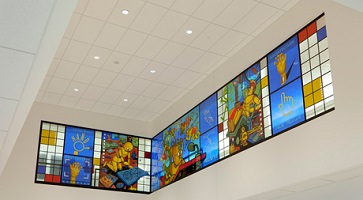
The window is a delight, both for its striking visual design and its wit. Spiegelman loaded it with subtle cross references (the toy robot of the artist’s childhood is repeated as an actual robot/servant in his future, for instance), inside jokes, and clever puzzles. The piece is best studied from the hallway above the cafeteria, where you can get right up next to it. If you can, I suggest it. To fully appreciate this thing, you’ve got to spend time with it.
A few tidbits from Spiegelman’s talk:
- The artist is represented as a wooden mannequin so that Art “didn’t have to worry if it’s a black dude, a Chinese chick, a jew or whatever.”
- Working with vector based programs is “like drawing with a plumber’s equipment.”
- On Dutch illustrator Joost Swarte: “Joost’s way of thinking—in one way he’s so precise, and in another way he’s crazy as a bedbug.” (Swarte presented that day as well; he’d designed cartoon stained glass windows for a courthouse in Holland.)
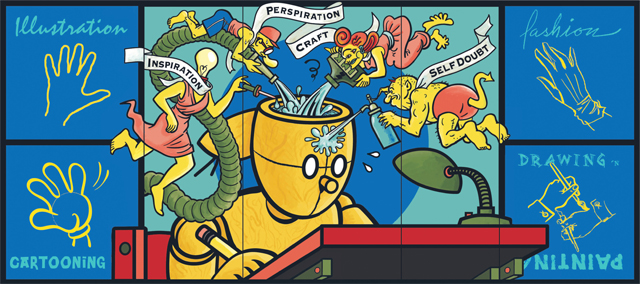
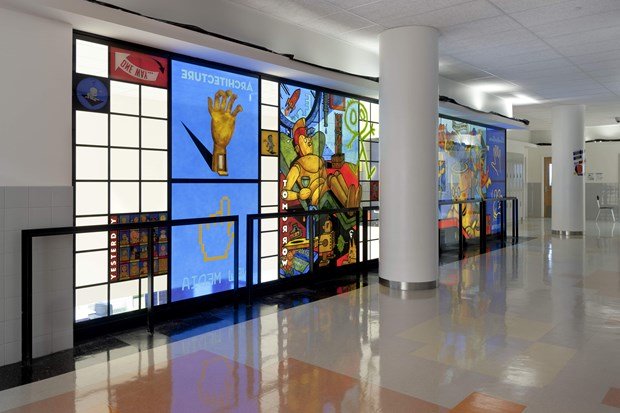
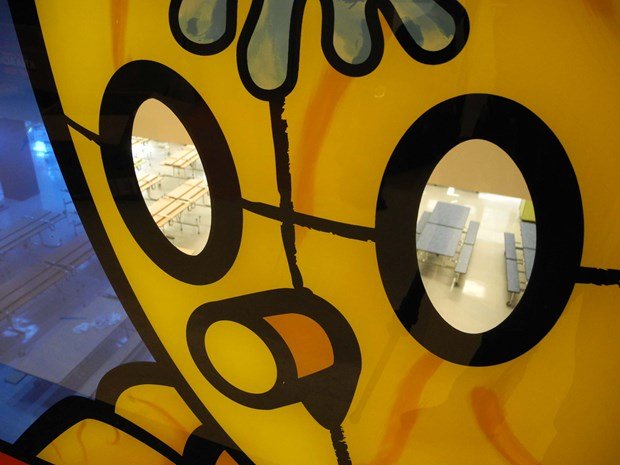
The High School of Art and Design is at 245 East 56th Street between Second and Third Aves. in Manhattan.

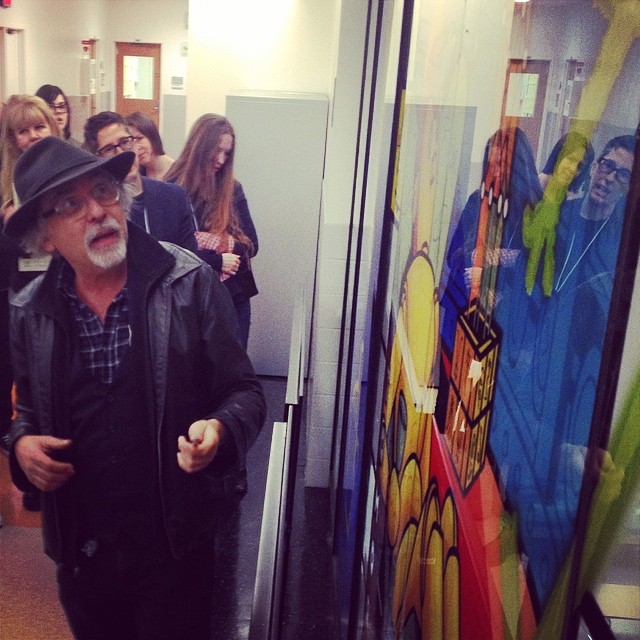
1 comment
I was part of the West Coast stained glass revival and have been writing about glass art since the 1970s. I became a follower of Art Spiegelman when I came across Raw, about the same time. To see the two — the artist and the art form — flow so magnificently together like this is something that would have been on MY bucket list — if only I could have imagined it coming true.
Saw the Spiegelman retro is Paris and went several times. Go see it (in Canada) before it closes forever.